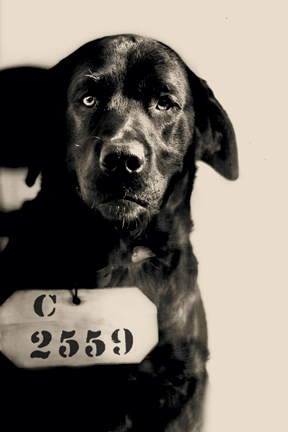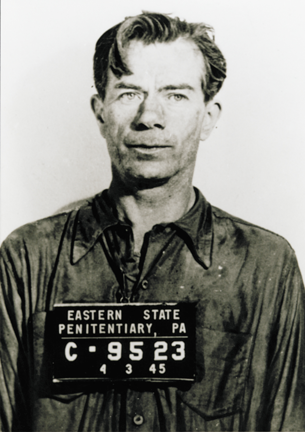By Roslyn Blyn-LaDrew
Where will you be this Halloween? If the run-of-the-mill ooohing and aaahing over your friends’ store-bought polyester costumes has you bored, you might try “Terror Behind the Walls” at Eastern State Penitentiary (2027 Fairmount Avenue, Philadelphia).
Now in its 19th year, this event is one of the most highly regarded haunted-house attractions in the country. Originally a one-nighter, in 1991, it now spans almost two full months (Sept. 17-Nov. 6). Visitors come from as far afield as China and the UK, and from all over the US, no small contribution to Philadelphia tourism.
Capsule History of the Prison
The Penitentiary was built in 1829 and was pioneering in its attempts to actually rehabilitate inmates, not just penalize them, using separate confinement to promote reflection on one’s crime. Its Gothic architecture, reminiscent of many churches and cathedrals, reminded both inmates and the city at large of the power of religion both to save and to punish.
Although the ideology of separate confinement was eventually superseded, the Penitentiary, in its heyday, was the model for over 300 prisons worldwide.
The prison had one canine inmate, a black Lab named Pep. He was incarcerated in 1924 for allegedly murdering the cat of Mrs. Gifford Pinchot, wife of the then Pennsylvania governor.
But the charge may really be a cover story for Pep’s use to boost prisoners’ morale, foreshadowing what we now consider more humane treatment of prisoners, including, ironically, programs like Puppies Behind Bars or SOS Pen-Pals, where inmates train dogs for adoption (rescuing many from canine death row) or for service in law enforcement or for the disabled, including veterans.
1971 was the last year that the Penitentiary functioned as a prison. Abandoned, it became a sanctuary for stray cats, whose memory is now preserved in 39 sculptures throughout the site.
As I recall from my first visit, ca. 1995, it also became a habitat for science-fiction-caliber giant weeds.
Various proposals were made for commercial development (mall, luxury condos) but in 1988 a different approach, reopening for tourists, was taken, after great efforts by the Eastern State Penitentiary Task Force. This National Historic Landmark first opened for visitors in 1994.
Halloween at the Penitentiary
Producing “Terror Behind the Walls” requires hiring about 200 temporary employees, including actors, make-up artists (14!), and managers.
It includes five locations, named after aspects of prison life: Intake, Lock Down, Infirmary, The Experiment, and Night Watch. Among the features are custom animatronics, zombies, Tesla coils, and props from Transformers 2, part of which was filmed at the Penitentiary in 2008.
Originally the Halloween show included aspects of the prison’s actual history, but starting in the late 1990s it was considered more effective to separate the historical interpretation (traditional daytime tours) from the “Terror,” which is prison-themed but primarily for entertainment

Pep the Dog Mug Shot
Irish Connections
Among the Penitentiary’s most prominent inmates, second only to Al Capone, was bank robber “Slick Willie Sutton” (1901-80). His background was Irish-American and he was born in an Irish neighborhood in Brooklyn. He was noted for his “charm and personality” and another one of his nicknames, “Willie the Actor,” acknowledges his use of disguises to enter banks unrecognized. He was also considered a “wise old head” amongst prison populations, dispensing legal advice. It might be a bit of a stretch, but was there a touch of the Celtic shape-shifter, trickster, druid, and brehon in him? What Irish folk legends might he have been raised with that would have featured such characters?
However his Irish heritage may have affected his career, it didn’t save him from detection in 1945 when he and a few accomplices tunneled their way out of Eastern State, onto the streets of Philadelphia. In his mud-covered state, Sutton realized he would be an easy target and he was apprehended and reincarcerated.
He was released in the late 1960s, from Attica State Prison, and died, eerily enough, on November 2, 1980 (All Souls’ Day). What a tale his soul could tell!
When the Penitentiary was built in 1829, the neighborhood was on its way to becoming one of the city’s roughest, described in 1849 as a hotbed of “graceless vagabonds and unmitigated ruffians” (New York Tribune).
Once the Irish started arriving in droves, in the 1840s, due to the Great Hunger, the number of Irish inmates increased and they formed a noticeably large percentage of the prison population.
Given the hardships that many of the newly arrived encountered, it isn’t surprising that crime was an attractive alternative to backbreaking labor, or worse (as at Duffy’s Cut in Malvern in 1832). The difficulty of finding satisfactory employment lasted for generations, and the prison population steadily reflected this.
Catholic Murals
A final note of interest is the ongoing restoration of murals depicting key aspects of Catholicism combined with prison themes, painted in the early 1950s by inmate Lester Smith. The murals have been stabilized further deterioration and are now in active restoration. They are not open to the public yet but that is the eventual plan. A few images of them can be seen at www.easternstate.org/press/imagelibrary
Sean Kelley, Program Director
Program Director Sean Kelley is the site’s first full-time employee, having started in 1995. A Villanova University English major, Kelley’s very name cements his own Irish connections. His mother’s family, though largely German, included Coffeys from Co. Longford. His father, Donald Kelley, is professor emeritus of history at Villanova, specializing in Colonial America.
This article can only touch on the ways that Eastern State Penitentiary reflects American history, including criminology, penology, sociology, ethnic studies, and architecture. There are many other facets to its story and other special events during the year, such as Prison Break Weekends and a Bastille Day celebration, with a “Let them eat Tastykake” toss.
For full details on admission times and tickets ($10-30 and, new for 2010, VIP $99): www.EasternState.org/tickets. Dinner/hotel packages available. Group rates: 215 236-5111 x19; boxoffice@EasternState.org. Further info: www.TerrorBehindtheWalls.com or (888) 763-NITE.


